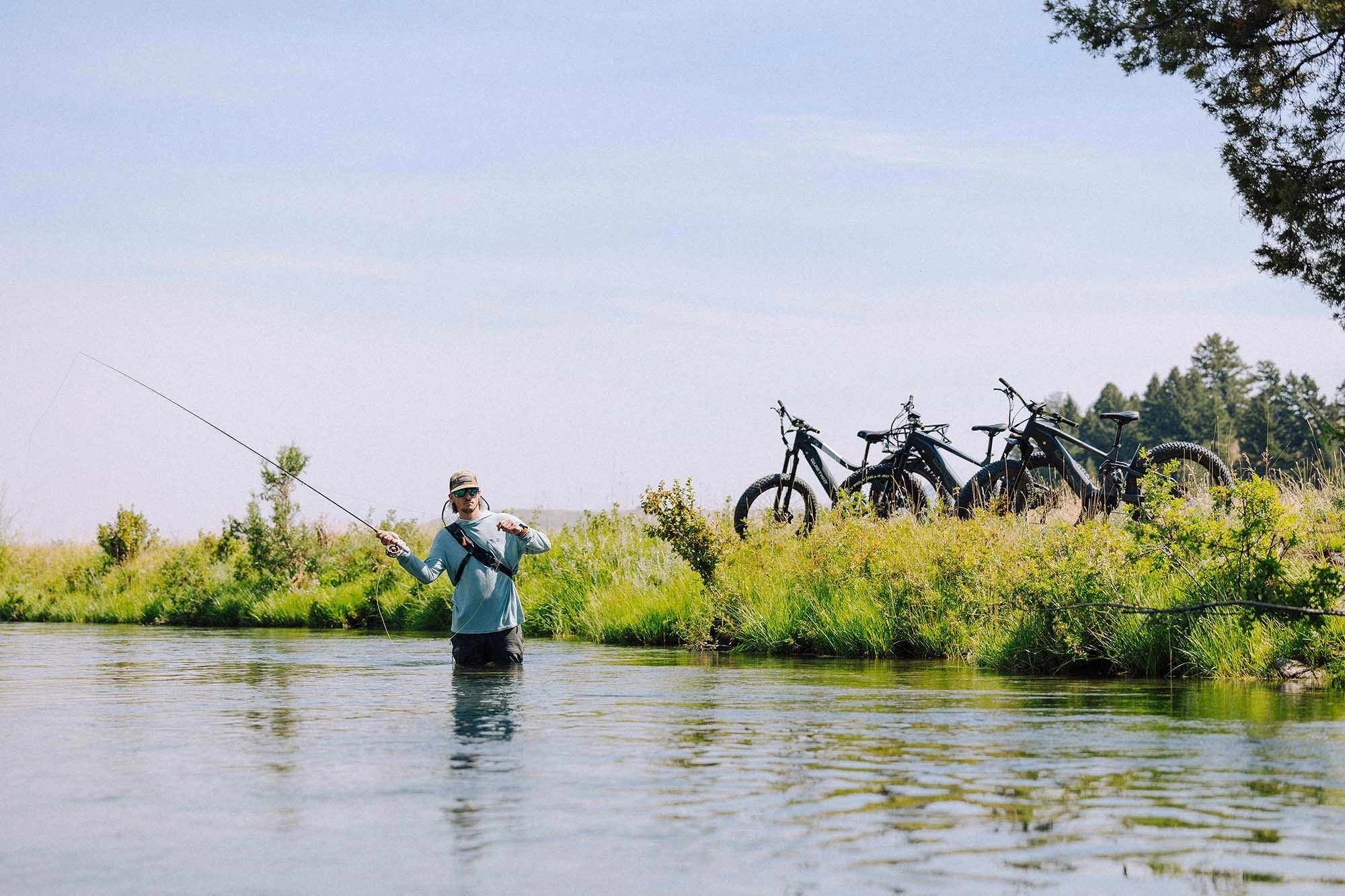Electric Bikes for Hunting: Real‑World Questions and Buyer Tips
Why Hunters Are Turning to E‑Bikes
Public land hunting has never been more crowded. Long hikes, steep climbs, and noisy ATVs often make reaching remote spots exhausting—or impossible. For hunters seeking quiet access with less physical strain, electric bikes for hunting are quickly becoming a game‑changer.
Unlike commercial review sites that only skim features, this guide focuses on real‑world hunting performance: range under load, cold‑weather impacts, towing with trailers, and legal considerations on public vs private land. Whether you’re chasing elk in the Rockies or whitetails on Midwest farmland, this is your complete buyer’s guide.
Explore e‑bike‑friendly private hunting properties on LandTrust, where owner rules are clear and access is insured.
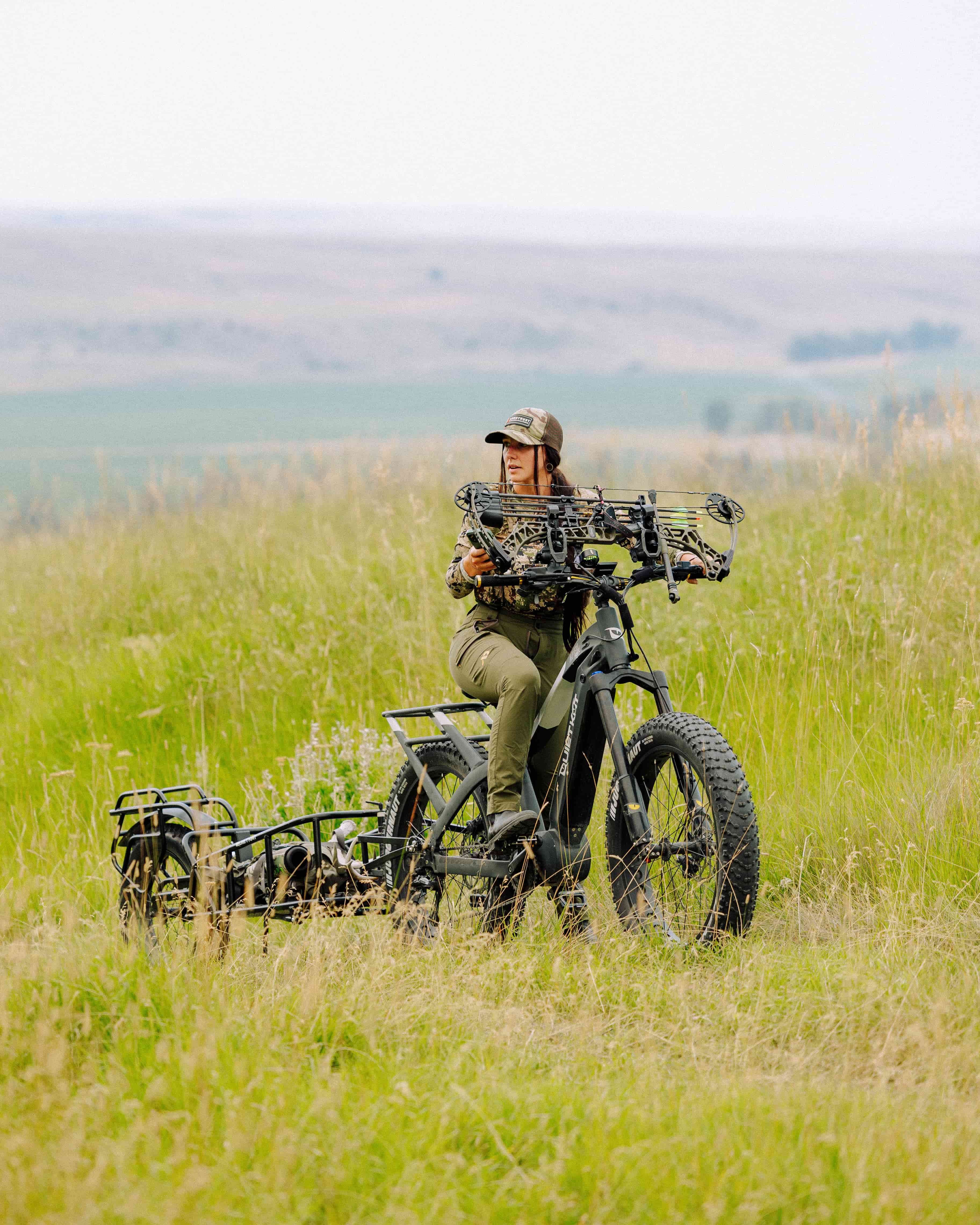
What Makes an E‑Bike “Hunting‑Ready” (Beyond Fat Tires)
Motor & Drivetrain
- Mid‑drive motors deliver torque at low cadence—ideal for steep grades and towing trailers. They also balance weight better than hub drives.
- Hub motors are simpler and cheaper, but struggle on steep, loaded climbs.
- All‑wheel drive (AWD) systems add traction in mud or snow, but drain batteries faster and add complexity.
Power & Torque
- 500W: Adequate for flat farmland and light towing.
- 750W: Legal limit for Class 1/2 e‑bikes; sweet spot for most hunters.
- 1000W+: Best for steep grades, heavy trailers, and bigger game recovery.
Payload & Braking
- Always calculate total system weight: rider + gear + trailer + game. Many “300 lb capacity” bikes overload quickly in hunting use.
- Hydraulic brakes with 4‑piston calipers and large rotors are essential for safe descents with a trailer.
Rolling Chassis
- Tires: Look for 4"+ width, reinforced sidewalls, and puncture protection for rocky or thorny terrain.
- Suspension: Hardtails are lighter and cheaper; full suspension improves comfort and control on rough trails.
Range Where It Matters: Hills, Trailers, and Cold Weather
Marketing claims rarely match reality. Here’s what truly affects hunting e‑bike range:
- Terrain: Loose soil, deep grass, and steep grades drain batteries fast.
- Load: A 150 lb deer in a trailer can cut range in half compared to riding unloaded.
- Temperature: Lithium batteries lose 20–30% capacity at freezing temps.
Mitigation Strategies
- Carry a spare battery and keep it insulated until use.
- Use lower PAS levels and maintain a steady cadence.
- Recharge at camp or vehicle daily.
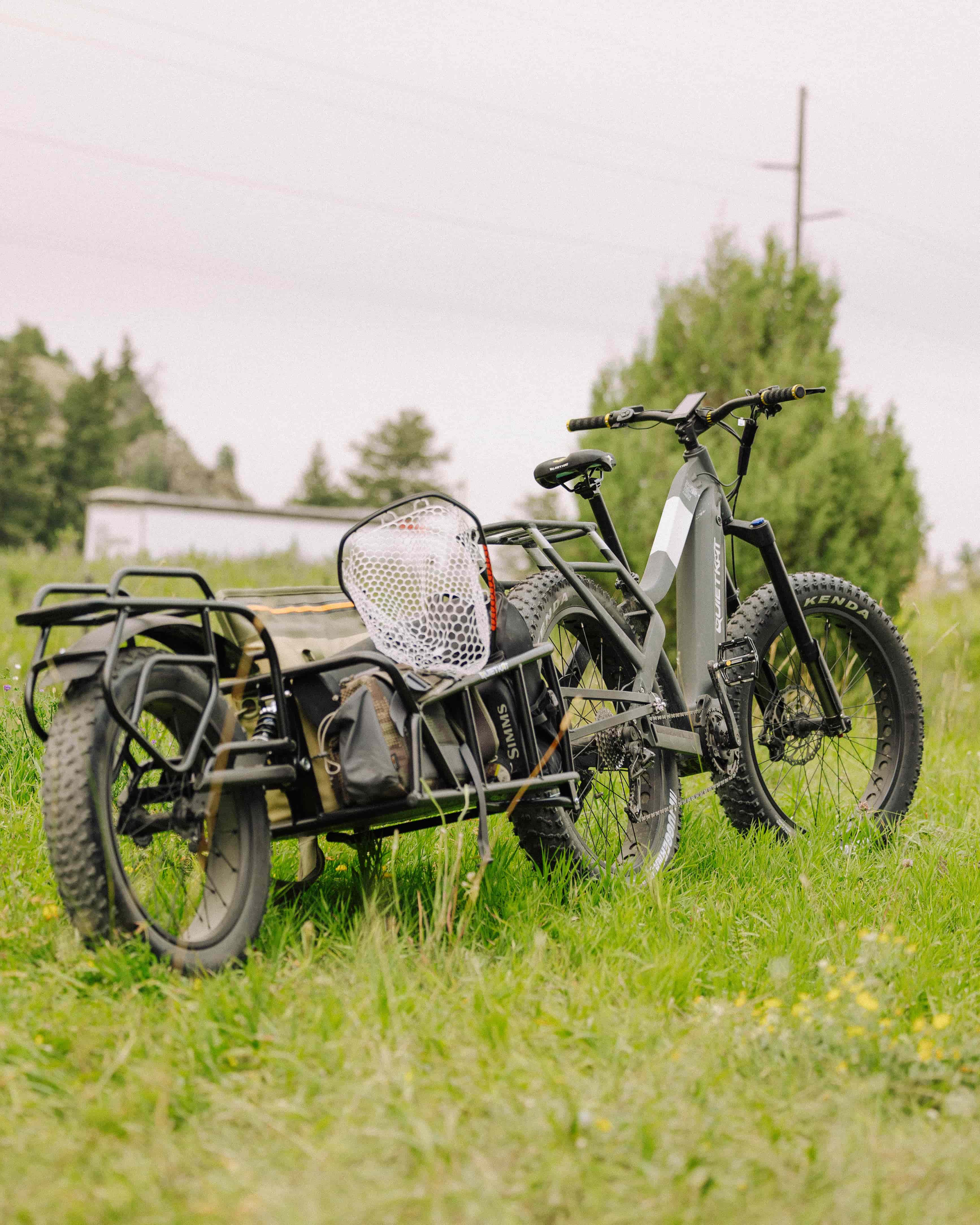
Towing Game Safely with Trailers
Recovering game is one of the toughest tests for e‑bikes.
Trailer Types
- Single‑wheel: Narrow, nimble, but less stable with heavy loads.
- Dual‑wheel: Wider and more stable, better for quartered elk or large whitetails.
Safe Hauling Practices
- Keep weight low and balanced with straps or nets.
- Walk the bike on steep descents to avoid brake fade.
- Consider quartering game for multiple lighter trips instead of one overloaded pull.
Private Land Etiquette: Always follow owner rules for gates and roads, and avoid rutting trails when soil is soft.
Quiet, Stealth, and Scent Management
E‑bikes aren’t silent—but they’re far quieter than ATVs.
- Noise: Motor whine is minimal at lower PAS settings; tire noise often exceeds motor sound.
- Stealth Tips: Slow your approach, stage your bike away from bedding areas, and avoid sudden braking.
- Scent Control: Use prevailing winds wisely—your e‑bike doesn’t eliminate scent discipline.
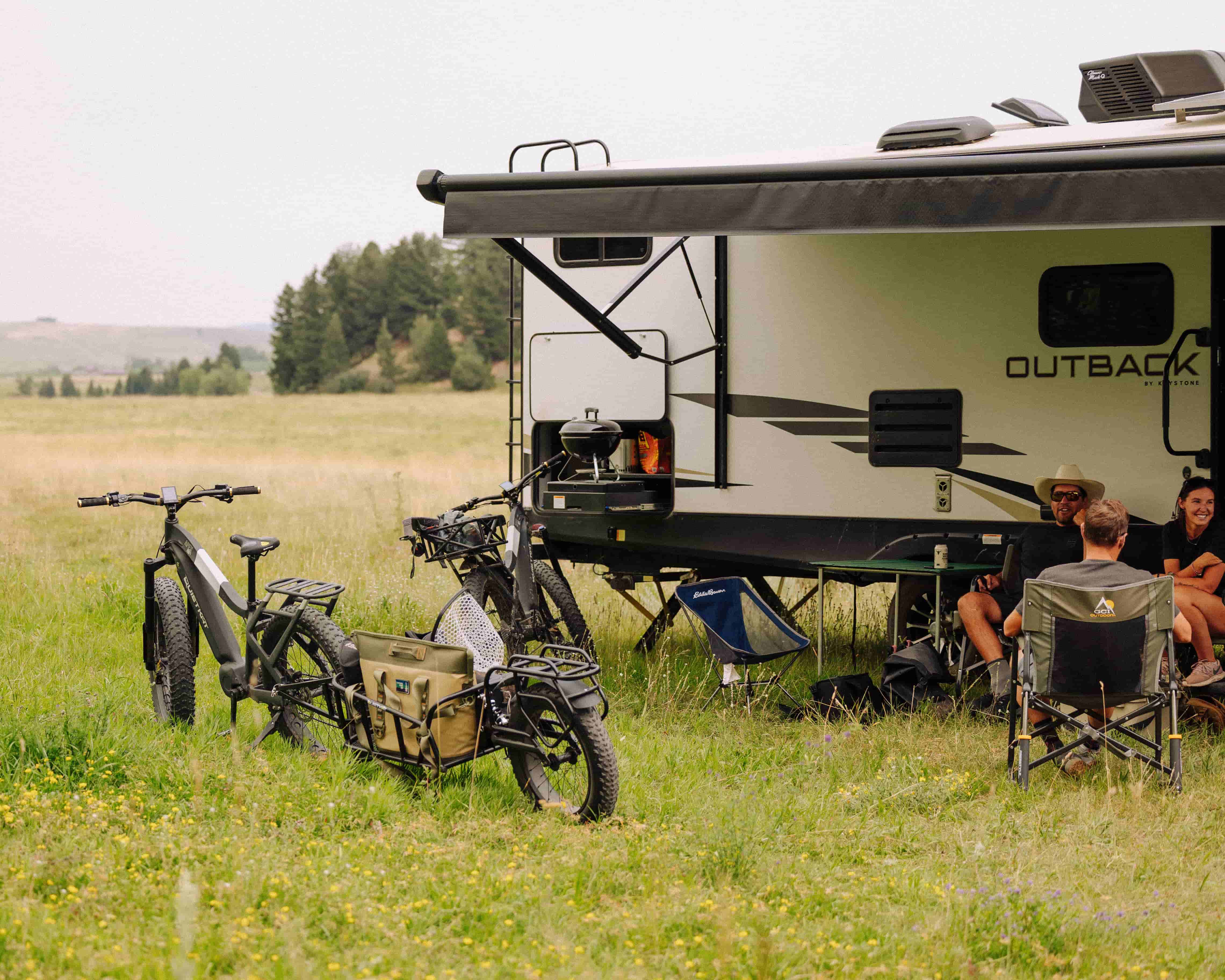
Legal Access: Public vs Private Land
E‑Bike Classes
- Class 1: Pedal‑assist only, up to 20 mph.
- Class 2: Pedal‑assist + throttle, up to 20 mph.
- Class 3: Pedal‑assist only, up to 28 mph (often excluded from hunting trails).
Public Land Rules
- BLM/USFS: Many non‑motorized trails prohibit e‑bikes, even Class 1. Always check local regs.
- Reference: BLM e‑bike policy, USFS guidance.
Private Land Advantages
On LandTrust, e‑bike use is clear in listing rules, reducing conflicts and uncertainty. Hunters benefit from insurance, verified owners, and transparent access policies.
“On private land, permission is simple—ask the landowner, follow the rules, and ride with confidence.”
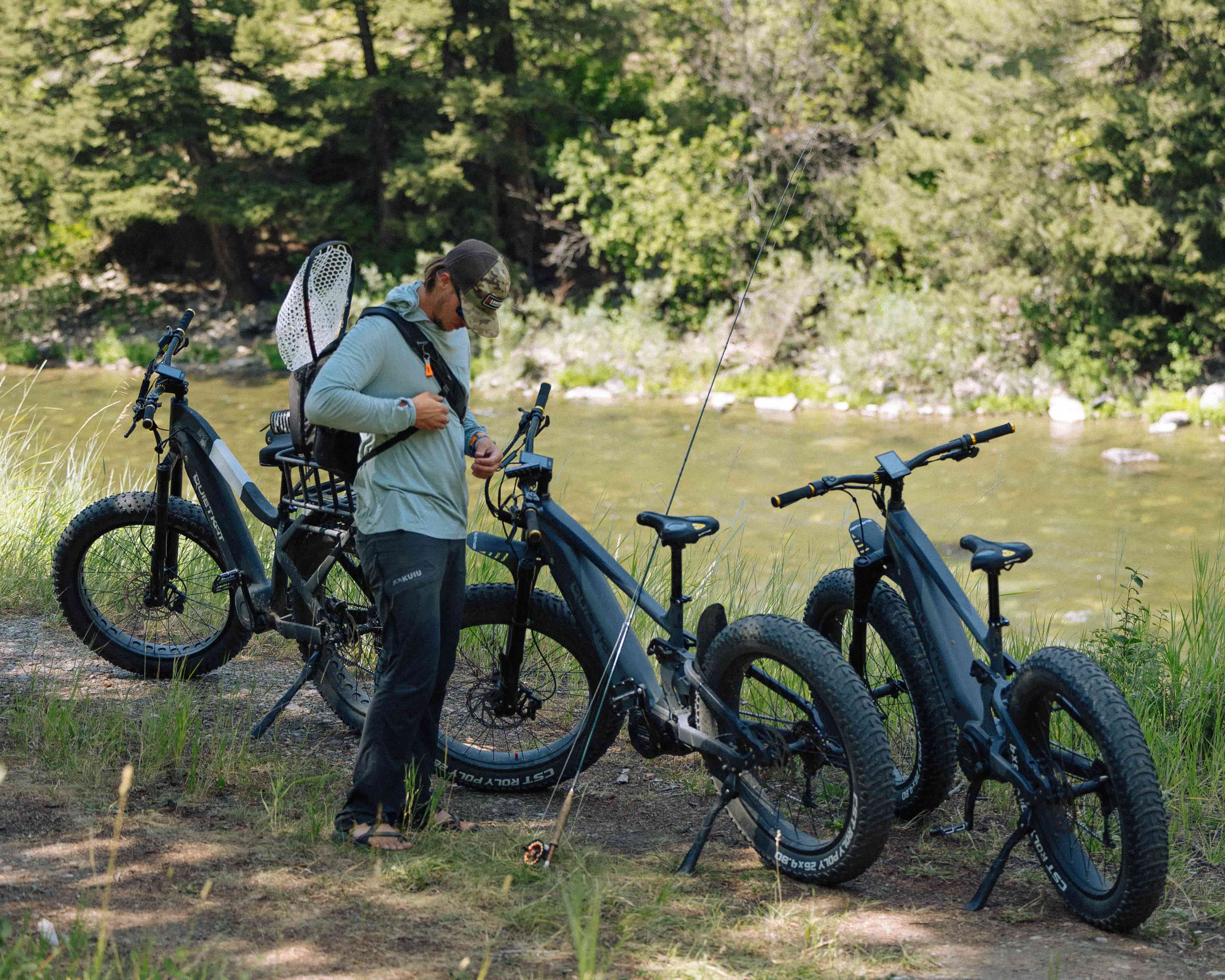
Real‑World Picks by Use Case
Budget (<$2,000)
- Pros: Affordable, simple, good for flat farmland.
- Cons: Weak motors, limited range, lower‑tier components.
- Best For: Short access rides and light loads.
Mid‑Tier ($2,000–$4,000)
- Pros: 750W motors, stronger brakes, better tires.
- Cons: Still limited for heavy towing.
- Best For: Mixed terrain and moderate trailers.
Flagship ($4,000+)
- Pros: 1000W+ torque, AWD options, long‑travel suspension.
- Cons: Heavy, expensive, harder transport.
- Best For: Rugged terrain, elk recovery, long climbs.
Add‑Ons
- Trailers: Dual‑wheel for stability.
- Transport: Hitch racks, ramps, or truck beds.
- Storage: Battery covers, waterproof panniers.
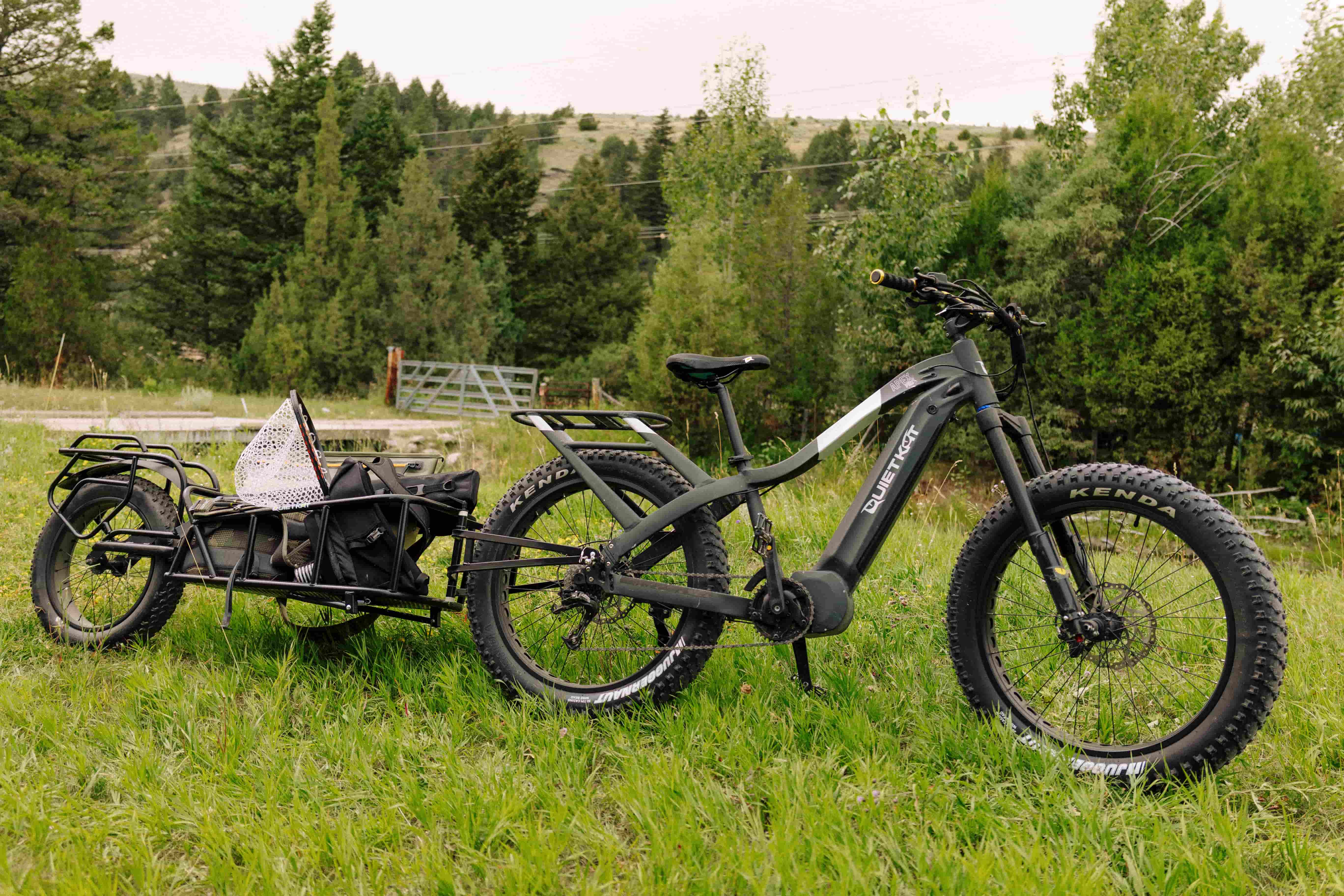
For Aging or Reduced‑Mobility Hunters
E‑bikes open opportunities for hunters who might otherwise be sidelined.
- Frames: Step‑through designs ease mounting.
- Controls: Torque sensors provide smooth starts on inclines.
- Safety: Practice towing before the season; use stable trailers.
- Transport: Use ramps or low‑lift racks to reduce strain.
Pre‑Hunt Checklist
Gear & Bike
- Battery charged + spare packed.
- Tires inflated for terrain.
- Brakes checked; lights functional.
- Trailer clips and straps secured.
Route & Rules
- Estimate range with margin.
- Mark bailout routes.
- Confirm owner rules on gates and roads.
Owner Communication
- Message ETA and hunting plan.
- Confirm access points and locks.
Follow listings on LandTrust for real‑time owner updates before your trip.
FAQs About E‑Bikes for Hunting
Are e‑bikes worth it for hunting?
Yes—for quiet, low‑impact access, especially on private land. They save energy for the hunt itself.
Will an e‑bike pull a deer?
Yes—with a proper trailer and at least 750W motor. Expect reduced range.
Are e‑bikes allowed on public hunting land?
Rules vary. Many “non‑motorized” trails exclude them. Always check BLM/USFS regs.
500W vs 750W vs 1000W: which should I buy?
Choose based on terrain and towing: 500W (flat/light loads), 750W (balanced), 1000W+ (steep/heavy).
Mid‑drive vs hub drive for hills?
Mid‑drives excel on climbs and towing, though hubs are cheaper and simpler.
How do I manage batteries in cold weather?
Keep spares insulated, deploy only when warm, and maintain steady cadence.

